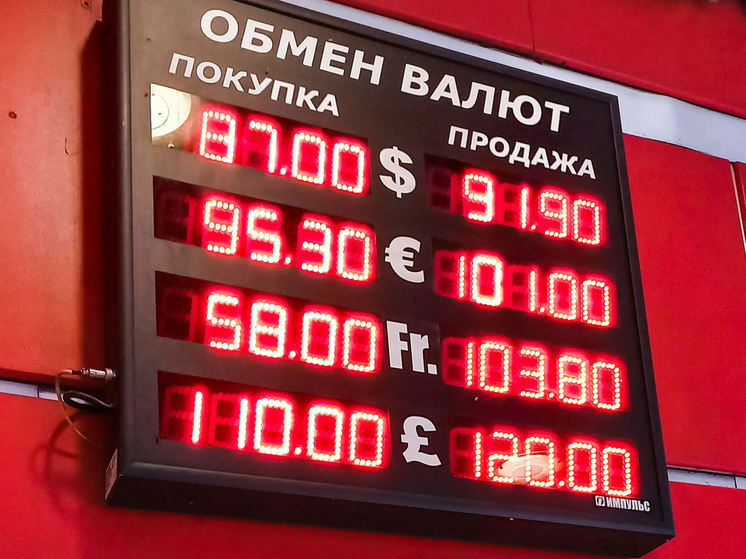Analyst Osadchy: “On the stock market, they count money, not dead people.”
The official dollar exchange rate fluctuated in the range of 90-93 rubles throughout March. Neither the Russian presidential elections, nor drone attacks on oil refineries, nor the Central Bank's decision on the key rate could knock him out of this corridor. The foreign exchange market even ignored the terrorist attack at Crocus. Maxim Osadchy, head of the analytical department of BKF Bank, told MK about why this happened and what news could affect the exchange rate.

Let us recall that the author of the “black swan” concept was (a difficult to predict and rare event that has significant consequences) is economist, philosopher and former trader Nassim Taleb. He drew attention to the harmful confidence of people that the future can be calculated based on the experience of the past. In reality, “black swans” are happen regularly. Terrorist attacks also include them; just remember the panic reaction of the world market to the events of September 11, 2001 in the USA.
— Indeed, neither the currency nor the stock market noticed this event. No matter how cynical it may sound, they count money, not dead people. For all the enormity of what happened at Crocus, this event almost did not affect the financial system, trade, or the economy as a whole. And the small fluctuations that were observed on Monday can be explained by the emotions of currency speculators who did not realize what consequences the tragedy that happened on March 22 would lead to. However, everyone very quickly realized that there were no fundamental reasons for panic in the financial markets.
All this greatly distinguishes this event from what, for example, happened after the start of the SVO. Then the West imposed sanctions and froze Russian assets worth $300 billion; international rating agencies have withdrawn credit ratings assigned to Russian issuers; «Mosex Exchange» closed for about a month; trading was stopped on the OFZ market, which is closely related to the foreign exchange market; there was complete uncertainty regarding foreign trade; The exodus of Western companies began from our country. It is not surprising that in such conditions the dollar exchange rate broke through the 120 ruble mark. The country's economy was on the verge of collapse, but thanks to the prompt actions of the government and the Bank of Russia, it quickly moved away from the dangerous line, and by mid-summer 2022 the dollar had almost halved in price.
— On the night of January 18, a new stage of the conflict began — drone attacks on Russian oil refineries. The consequences of this new strategy turned out to be, although not critical, quite sensitive for the market for petroleum products and the foreign exchange market. As of February 1, 2023, the register of Russian refineries (maintained by the Ministry of Energy of the Russian Federation) indicated 36 commissioned refineries (excluding mini-refineries). A quarter of them – 9 refineries – were damaged by drone strikes. The price of AI-92 gasoline on the stock exchange on January 17 was 42.9 thousand rubles per ton, on January 31 it increased to 50.8 thousand rubles, and on March 22 it reached 54.2 thousand rubles.
< /p>
— The Russian authorities took appropriate measures. So, in order to suppress the rapid rise in prices for goods that are extremely sensitive for the economy and the population, and even in a very sensitive period of time, before the elections, a ban on the export of gasoline was introduced on March 1 for a period of six months.
However, a direct consequence of both drone attacks and the embargo on gasoline exports — decrease in foreign exchange earnings of exporters. Accordingly, the decrease in currency supply caused a weakening of the ruble, and less than a week after the first blows, on January 23, a fairly stable trend of weakening of the domestic currency formed. If on January 22 the exchange market closed at 88.6 rubles per dollar, then this week the rate began to test the level of 93. Continuing this trend may lead to the fact that in 2024 the level of 100 rubles per dollar will be broken again, as happened in 2022 and 2023.
— A decrease in fuel production may also have a negative impact on the sowing season, which, in turn, will lead to an increase in food prices. In addition, rising fuel prices contribute to increased inflation due to increased transport costs. It is possible that this logical chain was taken into account by the Bank of Russia when making the decision on March 22 to maintain the key rate at a high level of 16%.
To some extent, these drones can be considered “black swans,” at least at the very beginning of attacks on refineries. After all, it is clear that oil refineries are the most “tasty” ones. targets, the economic effect of their defeat is very large, and it is extremely difficult to defend them. Objects worth tens of millions of dollars are affected at a disproportionately lower price of a drone.
Of course, these drones — not very fat “black swans”, not as well-fed as those that arrived in flocks of sanctions in February-March 2022.
— Indeed, there have been no reports of new attacks this week, but let's not rush yet. In addition, the less oil is processed, the more it is exported.
— In the context of escalating geopolitical conflict, “black swans” They will inevitably circle over Russia in flocks. Among the discussed destructive but unlikely events — direct conflict with NATO, as well as the introduction of sanctions against the Moscow Exchange and the National Clearing Center (NCC). Let's hope that these «swans» they won't reach us.


